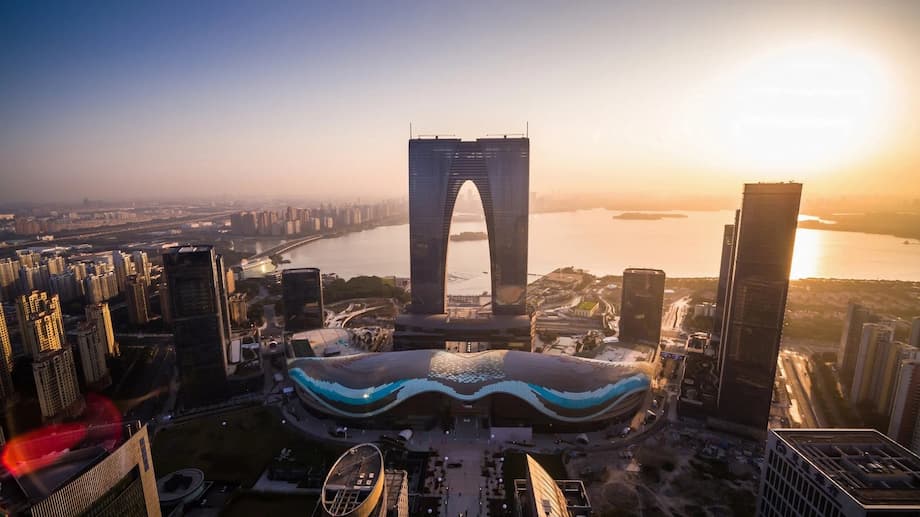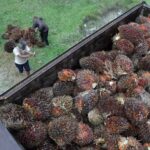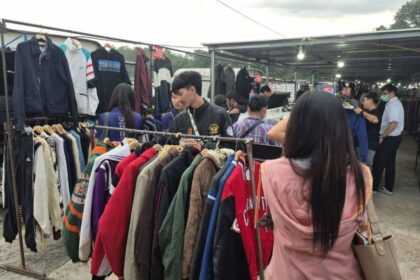Why CapitaLand is refreshing its China malls
CapitaLand Investment, the Singapore based real estate manager, is making a push to keep its China malls lively and relevant to fast shifting consumer tastes. The company is bringing a wave of new to market brands into high profile properties such as Raffles City Shanghai and Suzhou Center Mall. On recent visits, shoppers could find Chinese favorites like cosmetics label Judydoll and the milk tea chain Ah Ma Handmade alongside Singapore names Charles & Keith and Bee Cheng Hiang. The blend of local winners and regional standouts gives Chinese customers fresh reasons to visit, while giving merchants a managed path to enter one of the worlds most competitive retail arenas.
- Why CapitaLand is refreshing its China malls
- What new to market looks like at Raffles City and beyond
- A retail strategy built for emotional spending
- How the new Shanghai retail trust fits into the plan
- Balancing growth with caution in a tough market
- What it means for shoppers, brands and investors
- Challenges to watch
- Key Points
Puah Tze Shyang, chief executive of CapitaLand Investment China, described the approach plainly. In a September interview, he explained that the group uses its scale and relationships to curate novelty for each location. He said the goal is to differentiate by continually bringing in concepts that feel new to the market and by rotating formats quickly when trends move on. The strategy aligns with a broader shift in Chinese spending toward small treats and experiences that feel rewarding without straining the wallet.
At the same time, CapitaLand is opening a fresh channel to fund that retail refresh. The company launched a domestic retail real estate investment trust in Shanghai, called CapitaLand Commercial REIT, seeded with two malls with high occupancy in Guangzhou and Changsha. That listing, the first retail trust on the Shanghai exchange sponsored by an international firm, is designed to tap home market capital and recycle funds back into operations. The move supports an asset light model, freeing up cash for reinvestment while the group continues to operate and upgrade its malls.
What new to market looks like at Raffles City and beyond
Raffles City Shanghai shows how the playbook works on the ground. Tenants range from fast rising Chinese brands to international labels that have strong recognition among younger shoppers. Beauty, beverages and snacks create steady traffic at every hour, while anchor fashion and lifestyle stores capture heavier weekend spending. Singapore labels such as Charles & Keith and heritage food producer Bee Cheng Hiang add a cross border flavor that stands out in a crowded scene.
Raffles City The Bund as a launchpad
Across town, Raffles City The Bund opened its six story mall with a show of scale and novelty. When doors opened in 2021, the mall recorded more than 300,000 shoppers on day one and reached a committed occupancy of about 92 percent. More than half of its over 200 brands were new to China, East China, Shanghai or CapitaLand portfolio. The site combines retail with twin Grade A offices, event venues and curated attractions such as an indoor skate park and a 1990s Shanghai street replica. The concept signals what CapitaLand aims to replicate in other cities, a retail experience that feels constantly refreshed and anchored by entertainment.
Beyond Shanghai, a network effect
The brand pipeline extends beyond Shanghai. Properties such as Suzhou Center Mall and CapitaMall SKY+ in Guangzhou lean on a steady flow of food and beverage concepts, collectible culture and specialty stores that trend on social platforms. Fresh entrants help each site claim a distinct personality. The network allows CapitaLand to test concepts in one city, then scale popular ideas to others while tailoring the tenant mix to local tastes.
A retail strategy built for emotional spending
Chinese malls are adjusting to a form of spending often called emotional expenditure. Shoppers, especially younger ones, are treating themselves to affordable indulgences, from themed desserts and milk tea to collectible toys and limited runs of pop culture merchandise. This pattern rewards malls that move quickly, construct immersive displays and program frequent events. It also favors a mix with more food and beverage and more specialty stalls that can ride a social media wave and then give way to the next craze.
Leasing is evolving in response. Mall managers report that about 30 percent of tenants can change each year, which means a complete refresh within three years. Food and beverage now accounts for around 30 to 40 percent of tenants, up from about 25 to 30 percent earlier. Many eateries accept shorter leases. Some takeaway only stalls sign contracts as short as one and a half years, especially if the brand has gone viral on platforms like Xiaohongshu. The rent model is also shifting toward a larger variable component tied to sales, which pushes tenants to raise turnover and seatings per table while collecting delivery orders to lift revenue during off peak hours.
Collectibles and lifestyle brands slot neatly into this formula. Pop Mart and Miniso thrive by selling affordable toys and home items wrapped in playful store design. Blind box collectibles give shoppers a surprise hit at low cost, a useful draw when big ticket purchases feel less urgent. Malls are also courting fan communities, where followers of singers or actors organize merch pop ups and meetups, generating heavy footfall during concerts and special occasions. Even car showrooms have become traffic magnets. Electric vehicle makers, from domestic leaders to new entrants, pay prime rents for large, interactive spaces that double as test drive hubs and brand galleries.
Puah Tze Shyang says this constant refresh is central to CapitaLand approach. In a recent interview he summarized the goal and why new entrants help the malls stand out.
Bringing new to market brands into our malls is one way we stand out in a dynamic retail scene.
For mall operators, the formula is simple. If the experience feels fresh and social, footfall follows. Once traffic is there, a higher share of turnover rent and smart programming can lift revenue even when macro sentiment is cautious.
How the new Shanghai retail trust fits into the plan
The other half of the strategy is financial. CapitaLand has launched a retail real estate investment trust in Shanghai to channel domestic capital toward its China malls while keeping operations in house. A REIT is a vehicle that owns income producing properties and pays most of the rental income to unitholders. By selling a stake in the assets to the trust and continuing as manager, a sponsor can recycle capital and scale its platform without taking on heavy new borrowings.
The new trust, CapitaLand Commercial REIT, began trading on the Shanghai Stock Exchange with two seed properties. CapitaMall SKY+ in Guangzhou and CapitaMall Yuhuating in Changsha have a combined gross floor area of 168,405 square meters and an aggregate committed occupancy of about 97 percent. The two malls were valued at roughly 2.8 billion yuan at launch. CapitaLand Investment, CapitaLand Development and CapitaLand China Trust together hold at least 20 percent of the vehicle, and CapitaLand remains the operator of the malls.
The listing sets a marker. It is the first retail trust on the Shanghai bourse sponsored by an international company. It also complements CapitaLand China Trust, a Singapore listed fund that already holds retail assets in the country. With a pipeline of 43 operational retail properties in 18 Chinese cities and retail assets under management of about 18 billion Singapore dollars, CapitaLand has room to offer future assets to either platform when conditions are right.
Puah Tze Shyang expects healthy appetite for such products within China. He has pointed to deep local liquidity and growing interest from domestic institutions, including insurance firms that are lifting real estate allocations. In a recent briefing he captured that outlook in straightforward terms.
The REIT sector in China is on a positive trajectory, supported by deep liquidity and growing allocations from domestic institutions. Our view on the market remains positive over the long term.
He also framed the Shanghai listing as a milestone for CapitaLand and for the market. By drawing on domestic capital, the company can strengthen its balance sheet and redeploy proceeds into projects that line up with policy priorities, while keeping a stable base of fee income from the funds platform.
Balancing growth with caution in a tough market
Even as it adds new brands and opens a domestic fund vehicle, CapitaLand is taking a measured view of China exposure. Management has signaled an aim to lower the share of China in group funds under management over time, a shift that may involve divestments and fair value losses that would affect non operating earnings in the near term. Selling assets in China has been challenging during a prolonged property downturn, and the company has found it easier to recycle capital in Singapore and other markets in recent periods. The pivot toward an asset light model and the use of domestic capital partners are meant to keep the China business active without relying solely on the company balance sheet.
That mix of caution and commitment reflects conditions on the ground. Retail sales are still growing year on year, yet consumers remain thoughtful about big purchases. Malls that deliver novelty and community activity continue to draw steady traffic, and managers that share risk with tenants through a higher variable rent component can align incentives. The REIT platform offers another lever, giving domestic investors a way to own slices of busy malls while giving the sponsor capital to refine properties and tenant mixes.
What it means for shoppers, brands and investors
For shoppers, the experience tilts toward fun and choice. Expect more food halls with shorter menus and faster turnover, more cafes designed for photos, and more pop ups tied to games, anime and idol culture. New to market names will test ideas quickly, while familiar labels build flagship stores that double as social spaces.
For brands, CapitaLand malls offer a managed on ramp. The company can position a debut store in a high traffic zone, coordinate campaigns with tenant neighbors and track performance with sales based rents that reward turnover. Shorter leases and pop up formats allow young companies to test waters. Winners can expand within the same network into nearby cities.
For investors, the Shanghai listed trust opens a domestic channel to share in rental income from mature malls. The trust also broadens the sponsor fee base. Together with the Singapore listed CapitaLand China Trust, the platform can support a steady cadence of asset recycling if values and market windows align.
Challenges to watch
Consumer confidence can swing with macro headlines. A revival in housing or equity markets would help sentiment. If growth slows again, spending on small treats may hold up, but big ticket tenants could delay openings. Malls will have to stay nimble and use events to smooth weak periods.
Competition for footfall is intense. Every district has multiple centers competing for the same weekend crowd, and e commerce still takes a rising share of wallets. Landlords that invest in design and flexible leases will hold an edge. Those that wait risk slower sales and higher vacancy.
Policy and capital markets are another variable. The young REIT market in China is expanding, yet investors will watch governance, pipeline clarity and distribution stability. Interest rates and refinancing costs matter for valuations. A disciplined approach to acquisitions and asset enhancement will be crucial for any future injections into the fund platform.
Key Points
- CapitaLand Investment is introducing new to market brands to China malls to keep tenant mixes fresh and draw footfall.
- Raffles City Shanghai features Chinese favorites like Judydoll and Ah Ma Handmade alongside Singapore labels such as Charles & Keith and Bee Cheng Hiang.
- Raffles City The Bund opened its mall with more than 300,000 shoppers on day one, with over half of tenants new to China, East China, Shanghai or the group portfolio.
- China malls are adapting to emotional expenditure, with about 30 percent tenant turnover each year and food and beverage rising to 30 to 40 percent of space.
- Sales based rent and shorter leases help malls rotate concepts quickly, riding viral trends from platforms like Xiaohongshu.
- CapitaLand launched a Shanghai listed retail REIT seeded with CapitaMall SKY+ in Guangzhou and CapitaMall Yuhuating in Changsha, with about 97 percent occupancy.
- The trust taps domestic capital and supports an asset light strategy, with a pipeline of 43 retail properties across 18 Chinese cities.
- Management aims to balance growth with a cautious stance on China exposure, using capital recycling and partnerships to navigate a tough property market.












